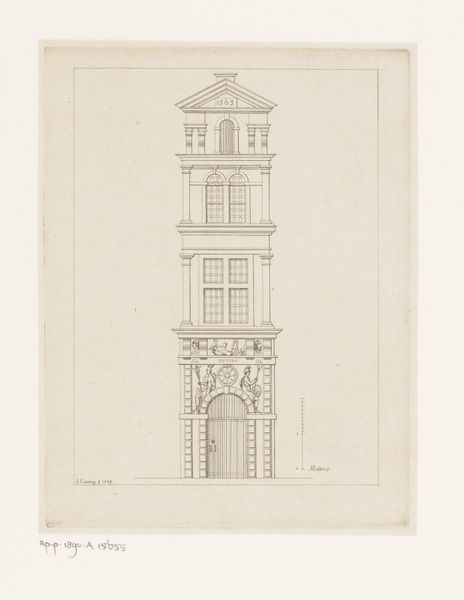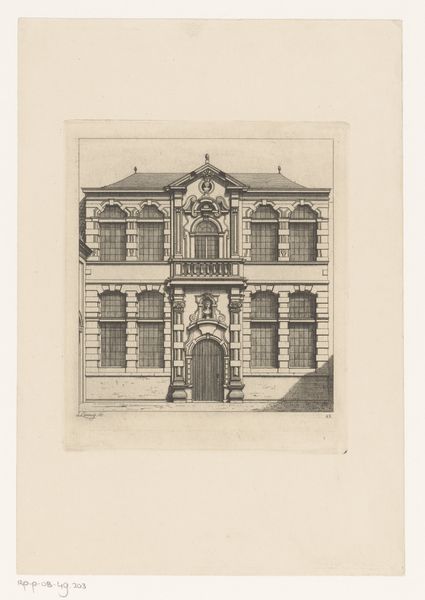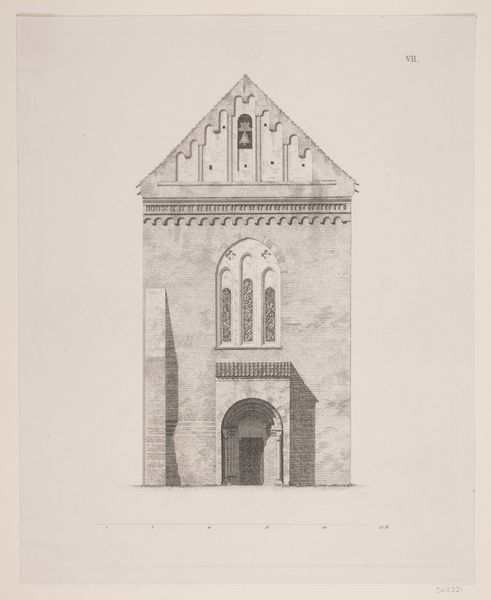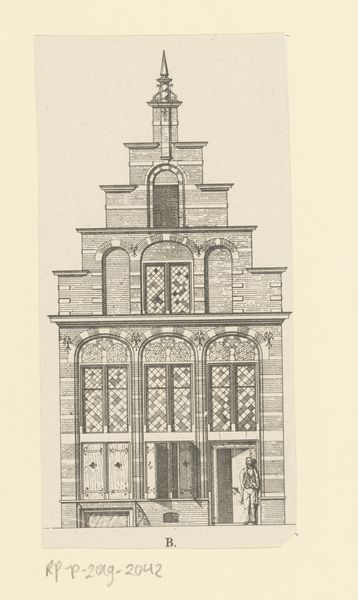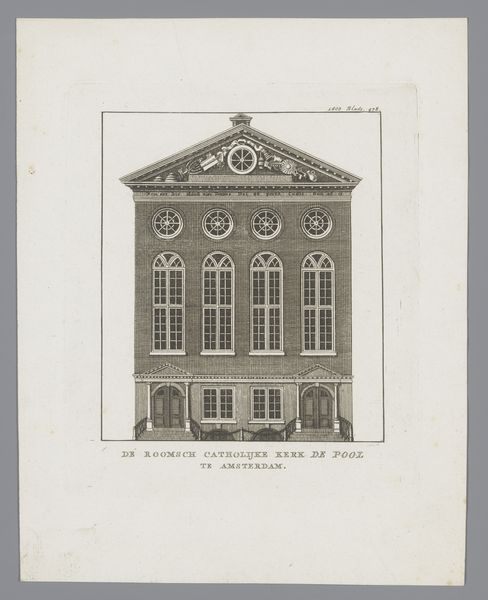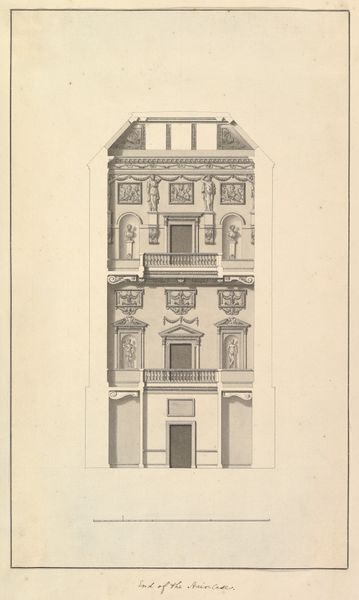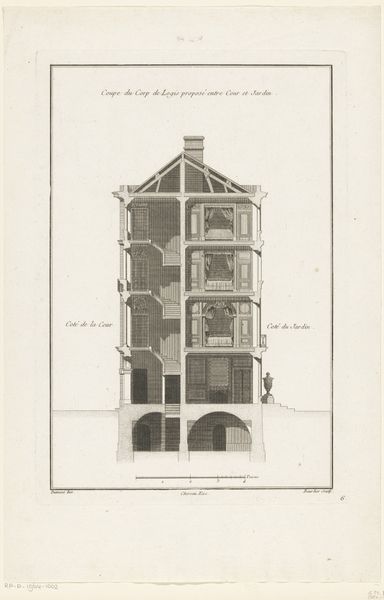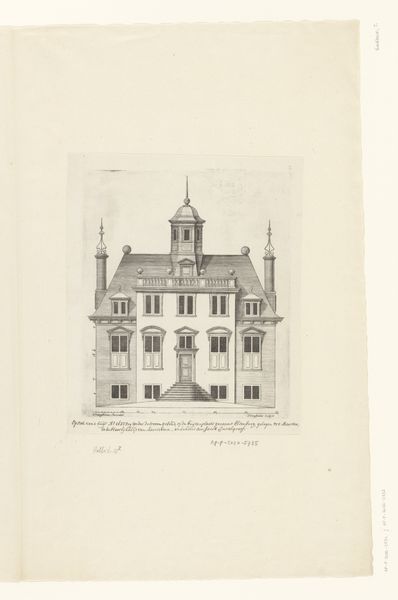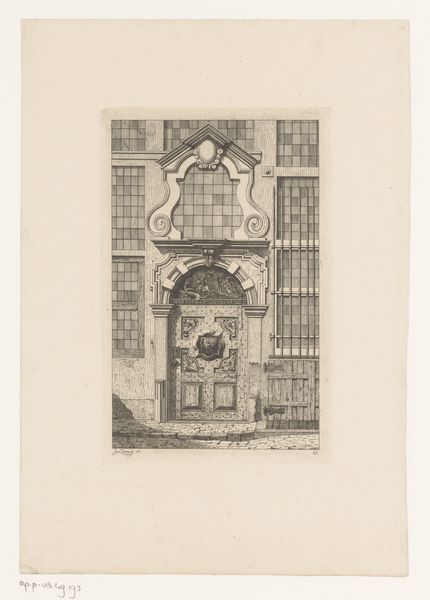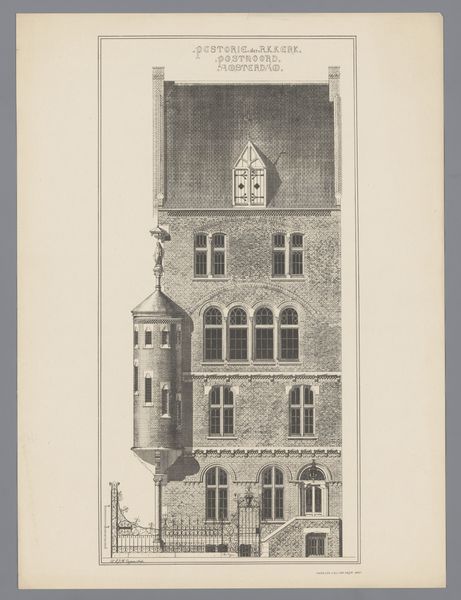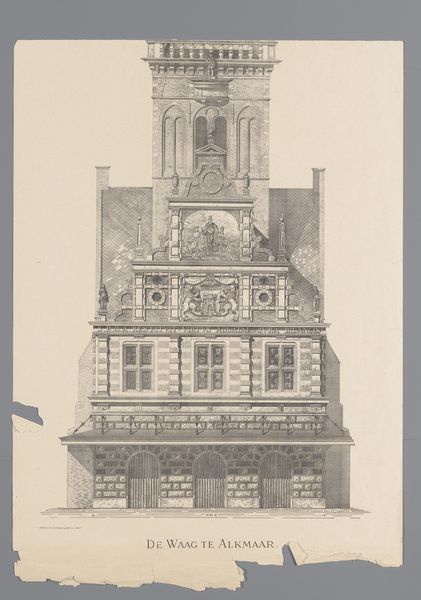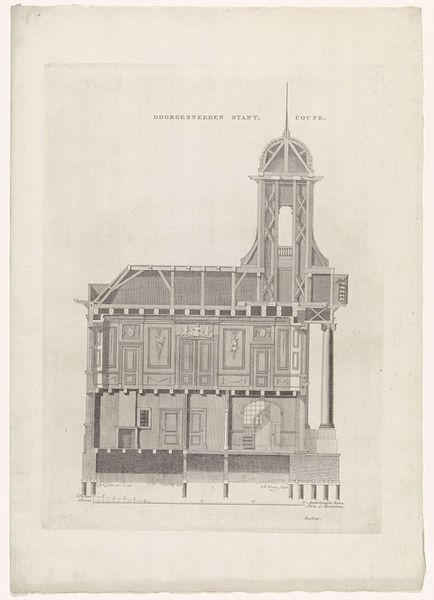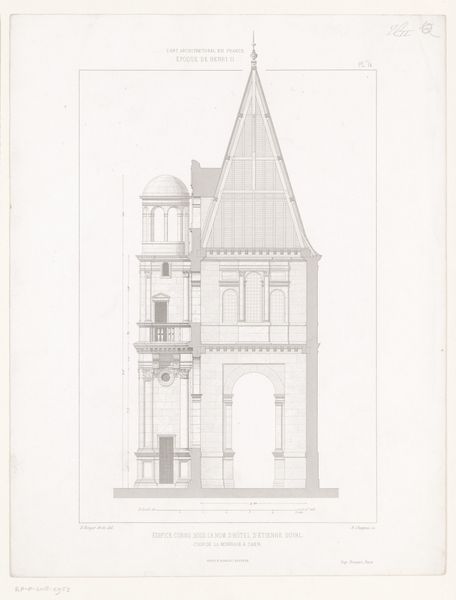
drawing, paper, ink
#
drawing
#
paper
#
ink
#
geometric
#
cityscape
#
realism
#
building
Dimensions: height 126 mm, width 75 mm
Copyright: Rijks Museum: Open Domain
Curator: What a striking piece. This drawing, titled "Reproductie van een tekening van de gevel van een huis in Zwolle," dates to after 1875 and depicts a cityscape with incredible detail. The artist has employed ink on paper to render a building facade in a style reminiscent of realism. Editor: There's a certain starkness to it. The monochromatic palette lends a seriousness, a structural honesty to the depiction. It feels more like an architect's elevation than a romantic cityscape. Curator: That's insightful. Consider Zwolle's place during this period. The late 19th century in the Netherlands saw a growing awareness of national identity. Such detailed portrayals of architecture contributed to this narrative, celebrating local styles and civic pride. These facades represented stability and tradition. Editor: Interesting. Focusing on materials and labor, the meticulous rendering with ink – the artist’s steady hand transforming paper – also becomes part of the narrative. This piece is also a document of artisanal skill, an interesting contrast with increasing industrialization at the time. How easily could someone build one of these structures now? Curator: I see it also through the lens of gender and representation. Who was privileged enough to occupy these homes, and whose labor was exploited in its construction and upkeep? Furthermore, who was given the space, and means, to create pieces such as this? Editor: Good points. And those windows—almost obsessively rendered with patterned glass, could represent a barrier between inside and out. Wealth on display, but also subtly guarded. The home, even here, is political. Curator: Precisely! By analyzing its socio-political implications, we expose power structures inherent within seemingly objective depictions of urban environments. The drawing transforms from just a cityscape into commentary. Editor: I suppose what began as just a materialist read quickly turns ideological! Curator: Absolutely! These intersectional approaches enrich our engagement with the work, going beyond superficial aesthetics to address pressing questions around identity, equality, and the very act of looking. Editor: Reflecting on that then, it is both blueprint, aesthetic object, and even subtly, evidence. I find it impossible to walk away without new avenues of thinking about a cityscape drawing.
Comments
No comments
Be the first to comment and join the conversation on the ultimate creative platform.
